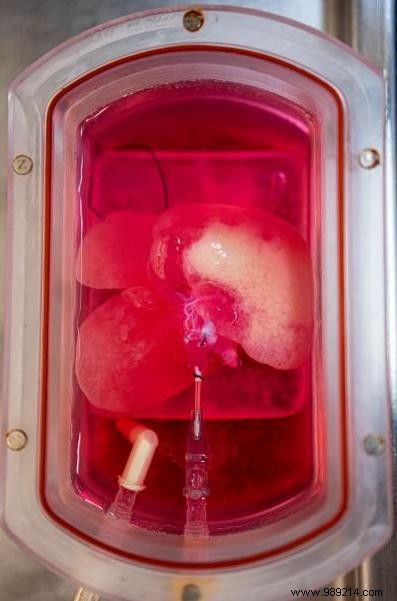Miniature livers developed from human skin cells have been successfully implanted in rats and survived for four days.
Around 1,300 to 1,400 liver transplants are performed each year in France (1,355 in 2019), for an average of 3,000 candidates. The situation is the same everywhere else:clinical settings suffer from organ shortages. A finding that, for several years, has led some researchers to imagine other ways to provide these liver services.
A lot of progress has been made in this direction. A few weeks ago, for example, a team of Brazilian researchers claimed to have bioprinted "liver organoids". In other words, miniature versions of livers obtained from human blood cells. These mini organs, we also learned, would be able to perform all the functions of a liver.
Researchers from the Faculty of Medicine at the University of Pittsburgh (USA) are working on another approach. The latter explain that they have "bio-engineered" mini human livers with the aim of transplanting them into rats, to then assess their viability both functionally and over time. Details of the study are published in the journal Cell Reports.
As part of this proof-of-concept experiment, which aims to determine whether or not a method or idea is feasible,researchers collected skin cells to "reprogram" them into stem cells , which were then manipulated to become various types of liver cells.
Experts then removed all cells from rat livers and replaced them with human liver cells. The livers then grew rapidly (in about a month). Five specimens, bred specifically to resist organ rejection, were then given the mini organs.

Researchers then observed how the organs responded. The transplanted mini-livers have been shown to be functional for four days , and that human liver proteins were indeed present in their blood serum. On the other hand, blood circulation problems have developed in and around the organ transplant site.
Although preliminary, these results could pave the way for the growth of replacement organs, thereby alleviating the lack of available donors. But everything in its time.
“In the near future, I see this more as a bridge to transplantation , explains Alejandro Soto-Gutierrez, lead author of the study. For example, in acute liver failure, you might need a liver boost for a while instead of a whole new liver .
The researcher also admits that many challenges will need to be overcome in order to make this technique viable in a clinical setting . Effective grafting of a modified organ would require, among other things, creating a functioning vascular system that provides essential oxygen and nutrients.
Source